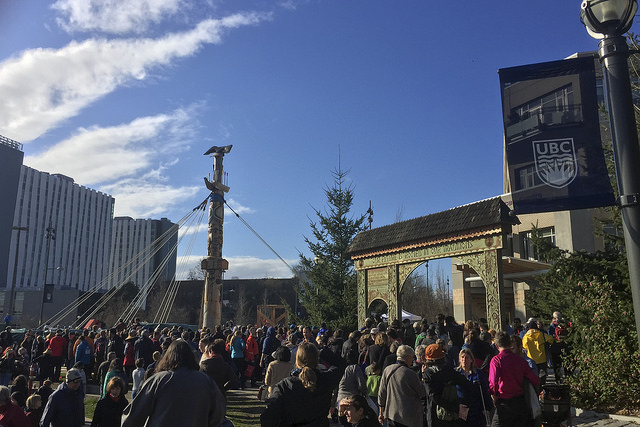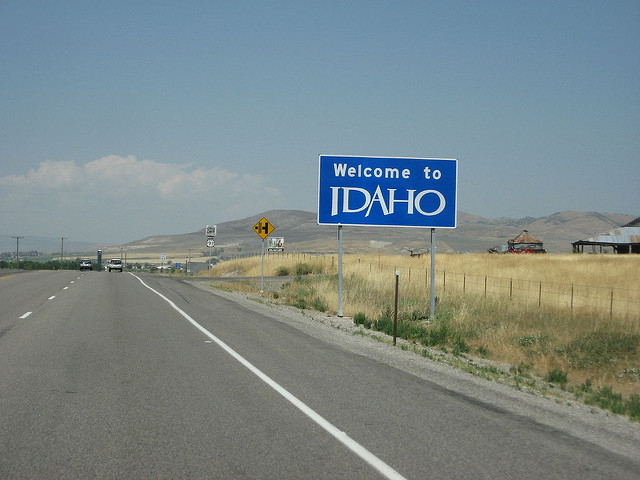I am taking a MOOC from UBC called Reconciliation Through Indigenous Education, and during week 2 one of the resources for the course was a short film by Anishinaabe filmmaker Lisa Jackson, called Savage (2009).
SAVAGE from Lisa Jackson on Vimeo.
This is such a powerful and thought-provoking film packed into only six minutes, I wanted to do some reflection on it as part of my belated responses to the 9x9x25 blogging challenge. Given that my last post was quite long, I’m counting it as two (numbers 4 and 5), so this is number 6 out of 9!
Description
The film begins with gorgeous shots of a young girl riding in a car watching the scenery go by. It seems a peaceful and beautiful atmosphere. It looks like early morning when the video starts, and the girl is being driven as the sun is coming up. A man is driving the car but we don’t see his face and it’s not clear who he is or where they’re going. The car is an old one, looking like it’s from the 1950s or 60s.
Soon we see a woman in a kitchen singing a lullaby (the description of the video on Vimeo says it’s in Cree). One gets the sense that this woman is the young girl’s mother. Her dress and the kitchen décor also suggest an era around perhaps the 1950s.
The scene, to me, feels very lonely and sad, even though the song is beautiful. The woman is sitting by herself at a table drinking tea, or sweeping the floor, or washing up…always by herself, looking off into the distance. She is looking off to her right as the young girl looks off to her right out the window of the car (these scenes are interspersed together). The lullaby is about a baby’s canoe being the moon flying among the clouds… “fly, baby, fly … but you must come back to me.” This ties into the profound loneliness of the scene.
The mother’s song ends as the car comes to a stop and the girl is led by the hand into a building where her hair is washed and cut, and she is helped into new clothes to emerge standing in a school. The music changes from peaceful to stressful as the woman cries, over and over, “you must come back to me!” Suddenly the scene changes to one of horror and anguish: the girl standing in a school in a new uniform and haircut seems like a sinister and horrifying scene. What have they done to her? We are about to find out.
This is where things get very interesting and surprising, at least to me. We see a classroom of students all with heads down, writing in notebooks. When the teacher leaves the class one looks up and it’s clear: they have become zombies. They all begin a synchronized dance that, in one respect, emphasizes their uniformity and how they all follow the same tune, blindly, dead-like. And yet, later on, two boys in turn take solos and do quite impressive moves on their own.
Finally, the teacher returns and the children scramble to their desks to work quietly on their schoolwork once more.
Reflection
This film expresses the Indian Residential School experience from the parent and child’s perspectives, including the sadness, anger, anguish and horror. But towards the end I think it also expresses resistance and resilience. At least, that’s how I read it.
As I went back and watched it again after seeing in the first time and knowing what will happen, the first part became imbued with even more of a sense of poignant beauty and loss. The girl looking out of an open window going past the land she will not see again for a long time, feeling the wind on her face with a sense of open air freedom that will also be lost as she becomes shut into the school (the last shot of the front of the school with doors closed is a nice juxtaposition).
Who is driving the car? One possibility is that it’s her father or grandfather. Indigenous children in Canada were required to go to residential schools as of 1920, so it’s possible a family member even drove them to the schools, though I think in some cases they were more forcibly taken away from their families.
When the film turns to show the children as zombies, on the one hand this is very fitting–the point of the residential schools was to take them away from their families so they will lose connections to their languages and cultures and take on the settler ones. In a sense, then, who the children were before is dead, and they become uniform like their uniforms, thoughtless and moving the same as the group, in the way they were taught.
And yet, I see possible hints of resistance as well…they take the opportunity when the teacher leaves the room to get out of their desks and move, get away from their school work. She sees only obedient, docile, and disciplined children; she doesn’t see that there is much more going on that they do with each other. They look up, they wake up, they dance. They hide all this again when she walks in the room, but there are things you have to hide to survive, things that you share in a community; the dance is not for her.
The turn to modern music and moves is important: while the beginning of the film takes place in the 1950s, with a song that could be much older than that, the second portion with the kids in the classroom could be happening at any time. And this combined with the modern music suggests to me a reminder that the effects of the residential school experience continue to resonate, not just through the children themselves but intergenerationally.
Regarding the solo moves by the two boys towards the end: while they are somewhat robotic, they also feel improvised and creative. The kids are standing out from the crowd, doing their own thing, expressing themselves while the others continue synchronous moves. We only see two doing this, but I get the sense that any of them could do so in turn, if there had been time before the teacher came back in.
It’s not a great sense of resistance or a great hope, and the lingering shot is of them quiet in a classroom in an imposing building that is shut up, but it’s something. I am left with a strong sense that these kids are going to make it despite the horrendous things that have happened to them.
Of course, this is just my reading, and it’s quite possible I’m missing a lot. The film doesn’t delve deeply into the horrors and abuses that happened in the system, and maybe I’m putting too positive a spin on the ending by feeling like the film expresses a sense of resistance and power in those who were subject to those abuses. I’m curious what others think.



